- About MAA
- Membership
- MAA Publications
- Periodicals
- Blogs
- MAA Book Series
- MAA Press (an imprint of the AMS)
- MAA Notes
- MAA Reviews
- Mathematical Communication
- Information for Libraries
- Author Resources
- Advertise with MAA
- Meetings
- Competitions
- Programs
- Communities
- MAA Sections
- SIGMAA
- MAA Connect
- Students
- MAA Awards
- Awards Booklets
- Writing Awards
- Teaching Awards
- Service Awards
- Research Awards
- Lecture Awards
- Putnam Competition Individual and Team Winners
- D. E. Shaw Group AMC 8 Awards & Certificates
- Maryam Mirzakhani AMC 10 A Awards & Certificates
- Two Sigma AMC 10 B Awards & Certificates
- Jane Street AMC 12 A Awards & Certificates
- Akamai AMC 12 B Awards & Certificates
- High School Teachers
- News
You are here
Mathematical Treasures - Rudolff's Arithmetic and Algebra
Christoff Rudolff (1499–1543) was a German speaking Rechenmeister, a teacher of arithmetic and computing. Although born in what is now known as Poland, he lived most of his life in Vienna. In 1525 he composed a book on algebra entitled Die Coss, a term which can be traced to its Italian origin, cosa, meaning “thing” or “unknown.” Algebra was first conceived as a mathematical discipline of finding unknowns in a problem situation. The title page and the contents shown here are from the widely-distributed and -used 1553 edition, to which commentaries by Michael Stifel (1487–1567) were added. Other editions followed in 1571 and 1615.
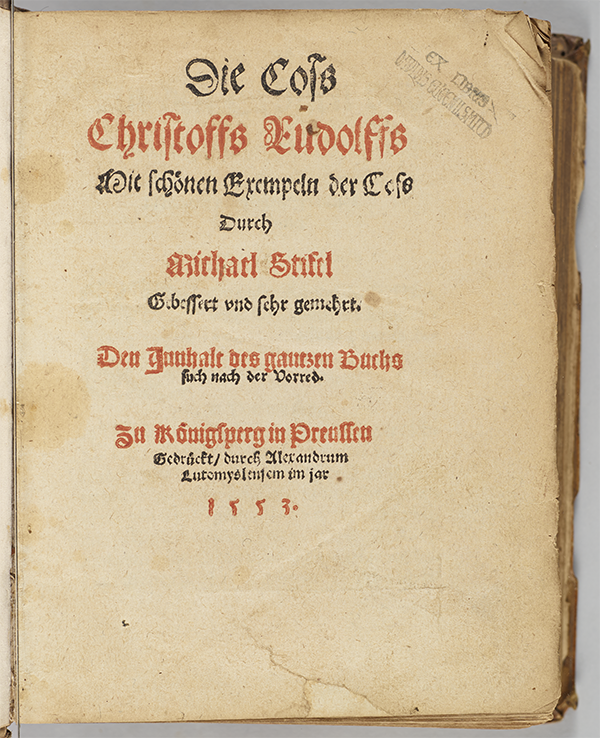

Folio 6 (recto) provides examples of arithmetic progressions.
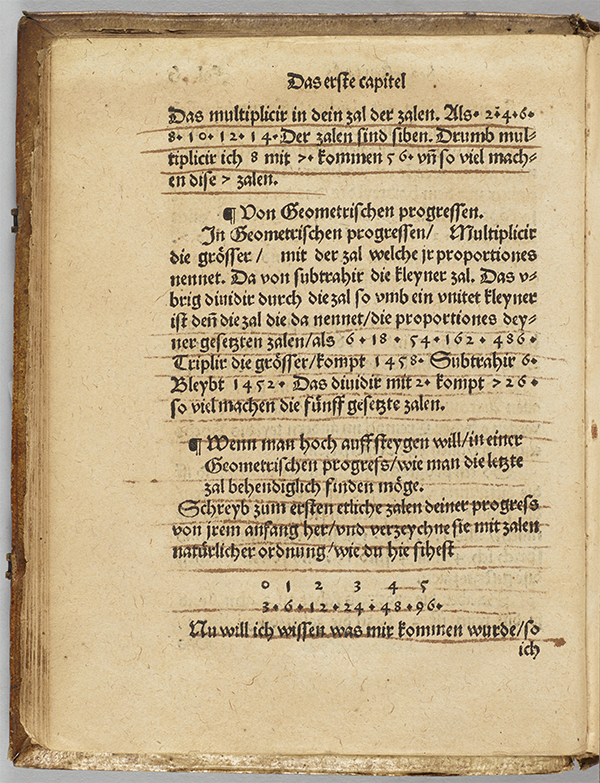
This page (folio 6, verso) provides the definition and examples of geometric progressions: e.g. 6, 18, 54, 162, 486, … or 3, 6, 12, 24, 48, 96, … .
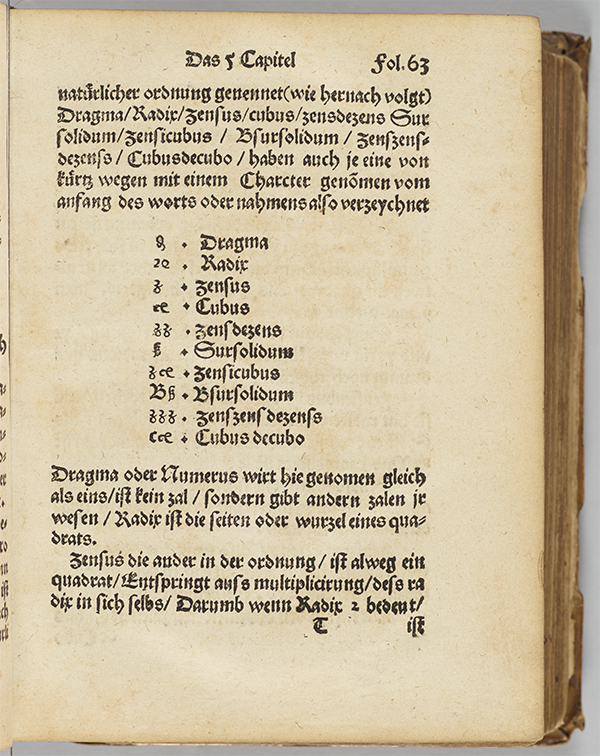
On folio 63 (recto), Rudolff provided a listing of symbols for what we would write as 1 (Dragma, a unit, the “builder of numbers”), X (Radix), X2 (Zensus), … , X9 (Cubus de cubo).
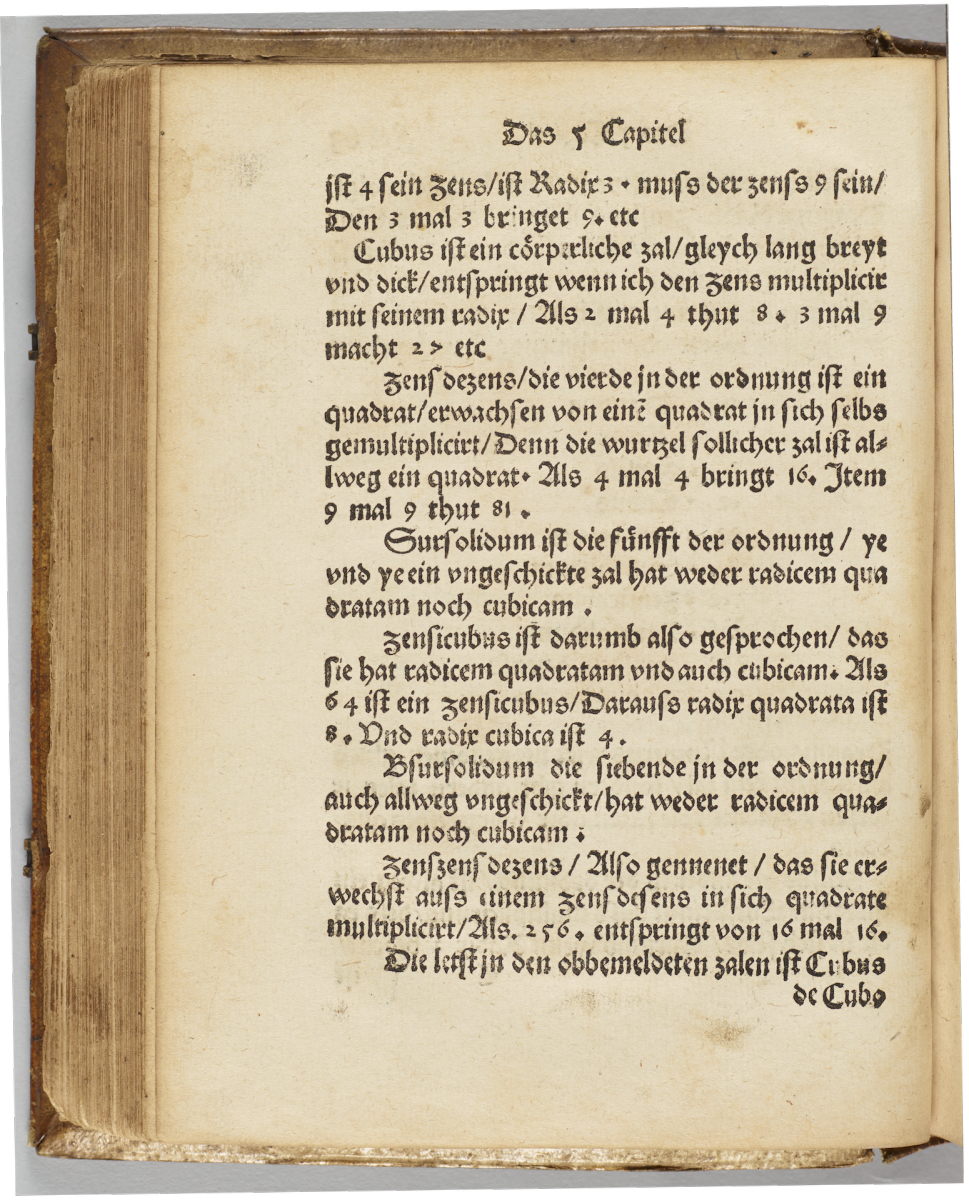
On folio 63 (verso), Rudolff illustrated the squaring and cubing of numbers with examples: 4 x 4=16, 9 x 9=81. He also illustrated finding the radix or square root (e.g. 64 = 8 x 8) and finding the cubicam or cube root (e.g. 64 = 4 x 4 x 4).
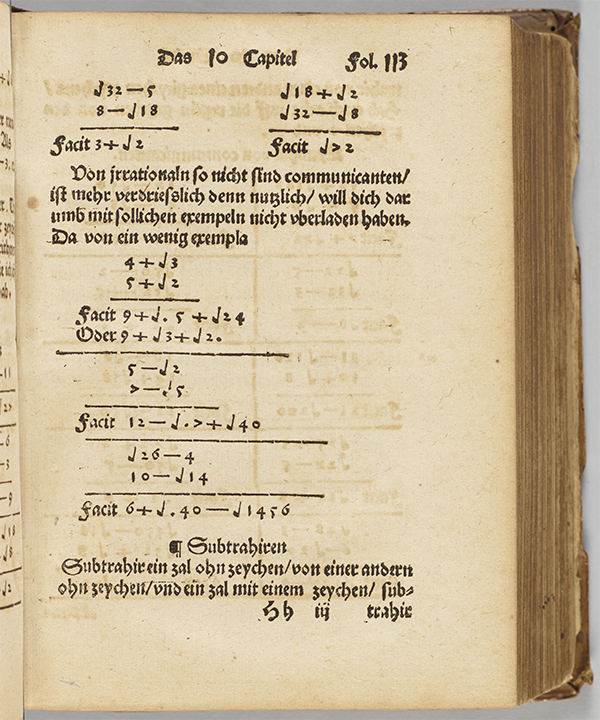
Christoff Rudolff was the first person to introduce the modern radical sign, “\(\sqrt{\phantom{xx}}\) ". Here on folios 113 recto (above) and verso (below), he provided instruction on adding and subtracting expressions containing radical parts.
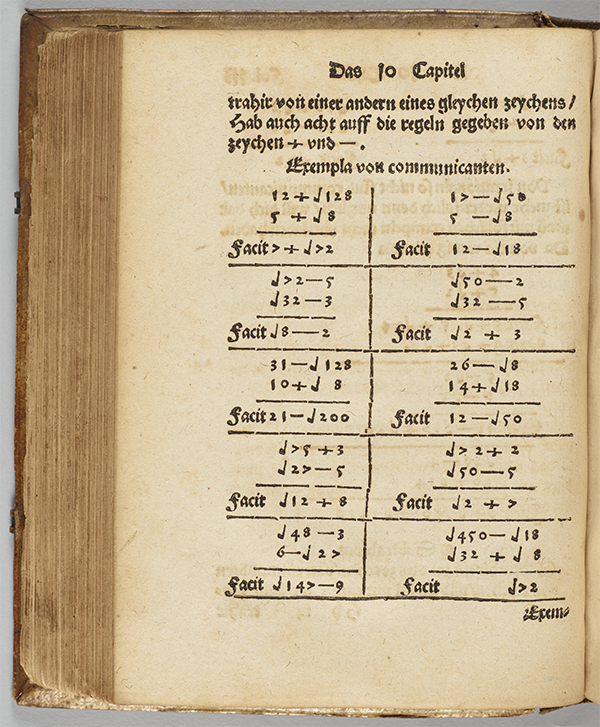
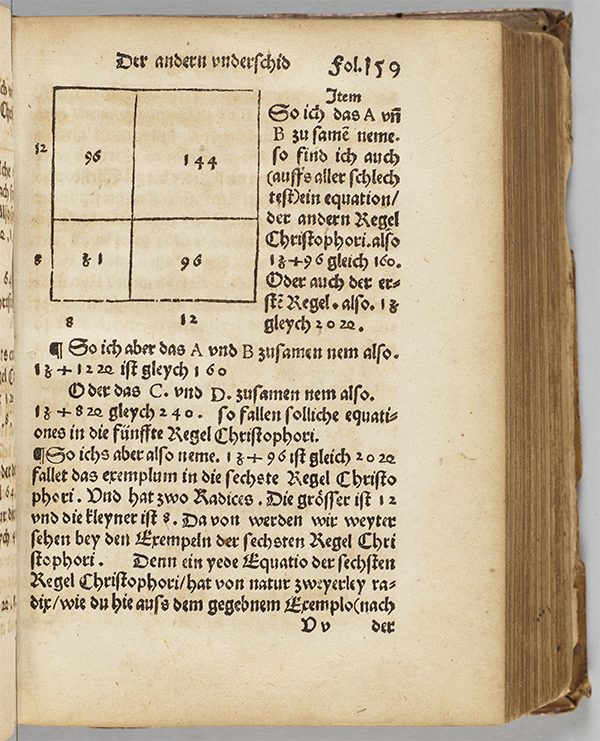
Here on folio 159 (recto), the author considered the equations X2 + 12X = 160, X2 + 8X = 240, and X2 + 96 = 20X. By a technique of “completing the square,” he demonstrated that the first has solution X = 8, the second X = 12, and the third both X = 8 and X = 12.

Here on folio 159 (verso), the new equations are X2 = 8X + 240 and X2 = 12X + 160. By a technique of “completing the square,” Rudolff demonstrated that both have the solution X = 20.
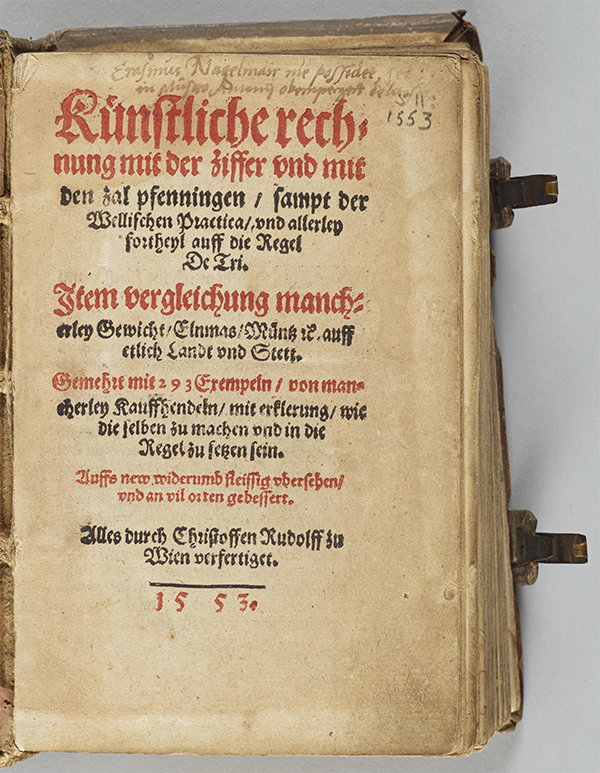
In 1526, Rudolff published Kunstliche rechnung mit der ziffer und mit den zal pfenningen, a reckoning book for merchants. He taught the new cipher arithmetic as well as counting table, or pfenning, calculation. This is the title page for the 1553 edition.
These images from its George Arthur Plimpton Collection are presented through the courtesy of the Columbia University Libraries.
Frank J. Swetz (The Pennsylvania State University), "Mathematical Treasures - Rudolff's Arithmetic and Algebra ," Convergence (January 2021)




